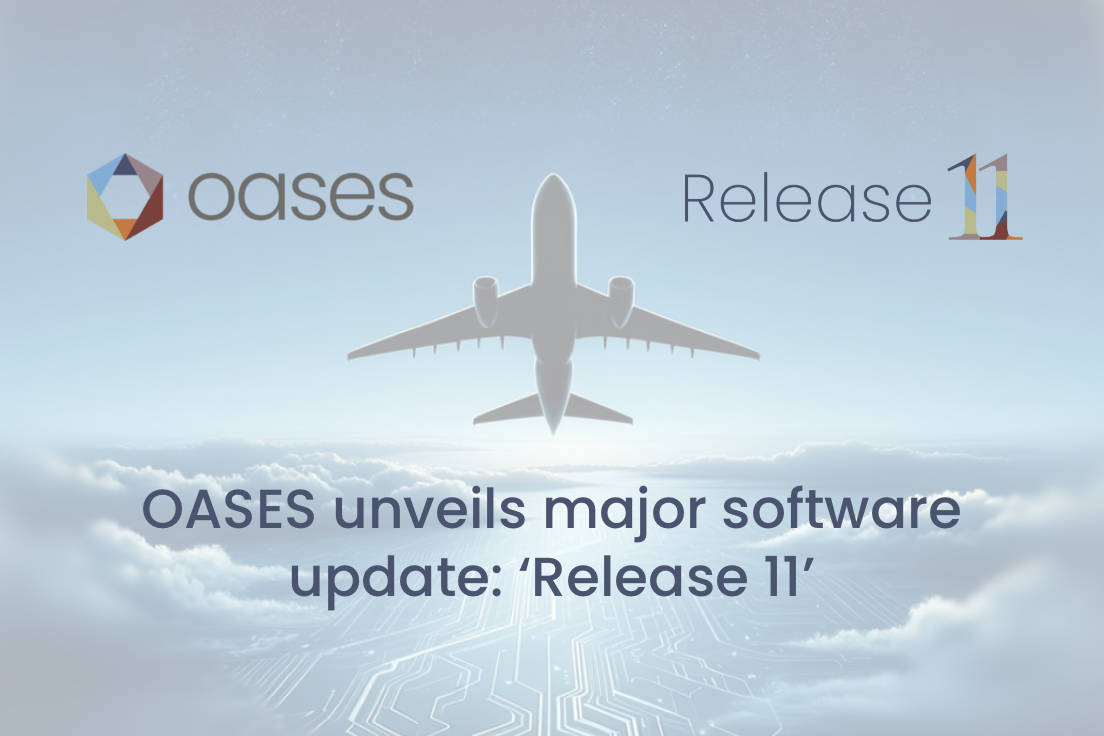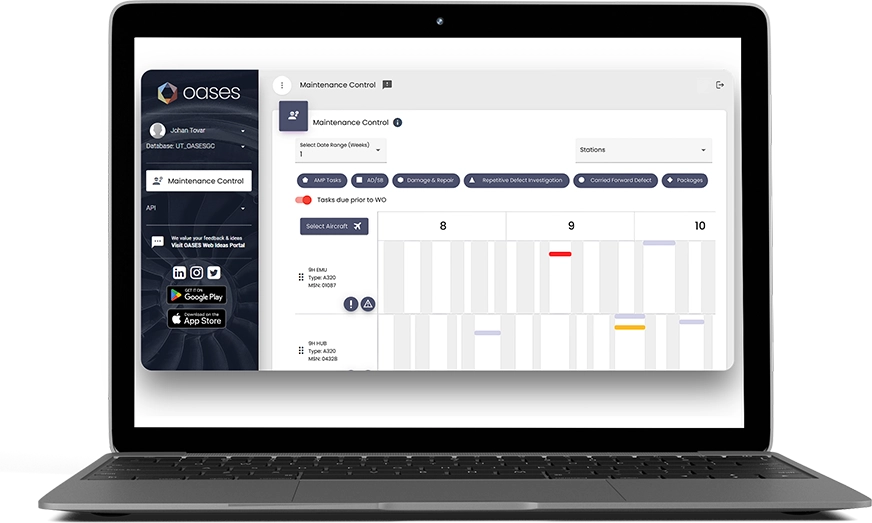The adoption of cloud based MRO software is growing and is forecast to continue at a CAGR of 4.4% until 2030.
There are several key drivers behind this, including: a surge in digitisation; the adoption of new technologies such as the Internet of Things (IoT); increased demand for reducing MRO turnaround times; and the increase in global air passenger traffic.
In fact, data from IATA shows that global passenger air traffic is growing at a rate of 4.2% annually and in 2040, total traffic will be double what it was in 2019.
To stay efficient as demand increases, cloud-based software is vital. It’s also crucial for adopting new technologies as they emerge. So, read on to find out why companies that want to innovate need to embrace it.
The Benefits of Cloud Based Aviation Maintenance Software
Cloud based maintenance software represents a significant shift from traditional, on-premise software systems. Unlike conventional systems, these solutions are hosted on remote servers and accessed via the internet. This approach offers unparalleled flexibility, scalability, and accessibility, making it an ideal choice for the aviation sector. Let’s elaborate on its many benefits.
Enhanced Accessibility
One of the primary benefits of cloud-based systems is the accessibility it provides. Maintenance teams and other stakeholders can access the system from anywhere in the world, using any device that’s connected to the internet. This level of accessibility is crucial for an industry that operates 24/7 across different time zones and locations.
Real-Time Data
Cloud based software ensures that users have access to real-time data, and this immediacy facilitates quicker decision-making and response times. This is critical in aviation maintenance, where delays can lead to significant operational disruptions, costs, and most importantly, safety concerns.
Data Storage Capacity and Processing Power
Legacy systems aren’t designed to handle the extensive datasets that modern aircraft and airline operations generate. Often built decades ago, they lack the storage capacity and processing power to manage and analyse this data – let alone to do so in real-time.
However, modern airline and MRO operations require immediate data analysis for timely decision-making and quick turnaround times. The processing power required to handle predictive maintenance, for example, exceeds the capacity of outdated software.
As a society, we generate more data per day than ever before and the total volume generated increases every year. (One forecast states that the annual volume generated by the aviation industry in 2026 will reach 98 million Zettabytes.)
In a previous article on big data in MRO, we explained how some aircraft generate 20 TB of engine data per flight hour – that figure is only about engine data and doesn’t include data from the multitude of other sensors fitted in modern aircraft. As more fleets gain sophisticated monitoring equipment, the need for greater processing capacity will become ever more pressing.
Scalability and Flexibility
As aviation companies grow and evolve, so do their maintenance needs. Cloud based systems are inherently scalable, which is vital for future proofing; whether it’s expanding to new geographical locations, adding more aircraft to the fleet, or accommodating more users, cloud-based systems can adjust to these changes efficiently and cost-effectively – without significant investments in hardware or IT infrastructure.
What’s more, the cloud enables easy customisation. That’s why we can tailor our solutions to meet unique customer requirements.
Cost-Effectiveness and Reduced IT Burden
Cloud based solutions are typically offered on a subscription basis, which means lower upfront costs compared to legacy software. This subscription model often includes regular updates, maintenance, and technical support, further reducing the total cost of ownership.
Additionally, since the cloud provider handles the IT infrastructure, aviation companies can reduce their in-house IT burdens. This shift allows them to focus their resources and efforts on core maintenance activities – and with the increase in lightning strikes and wind damage caused by climate change, maintenance activities are going to require more resources in future.
Data Security
Data security is a paramount concern in aviation. Cloud providers invest heavily in security measures, including encryption, regular security audits, and compliance with various international security standards. This level of security often surpasses what individual aviation companies can achieve on their own.
Cyber threats are evolving all the time and operators need to use software that’s able to adapt – it’s not worth the risk of using legacy systems that need constant patching.
Easier Compliance
Compliance with aviation regulations is streamlined through cloud-based systems. These systems are regularly updated to reflect regulatory changes, ensuring that maintenance processes remain compliant without manual intervention. This eliminates the risk of falling out of sync with current requirements and the penalties that could result.
Regulations regarding climate adaptation are changing frequently these days, so it’s important not to lose track by relying on systems that operate using outdated rules (such updates are much more cumbersome to deploy for legacy systems).
Enhanced Collaboration and Communication
Cloud based MRO software fosters better collaboration and communication among teams. Maintenance personnel and management can all access the same data, documents and insights, leading to more cohesive and coordinated operations. This collaboration is particularly beneficial for complex maintenance tasks that require input and expertise from various departments.
Integration with Other Data Sources
The cloud facilitates integration between different software systems. (Again, this process is much more cumbersome with legacy systems.) This is vital when it comes to data sharing.
Aviation data comes from a variety of sources and can be in different formats. Legacy MRO systems often have limited capabilities for integrating with newer data sources or formats, making it challenging to have a unified view of operations. This lack of integration can lead to data silos where information is not effectively shared across the organisation.
Again, with cloud-based systems, this isn’t an issue; such systems store data in a centralised way, providing a single source of truth.
Integration with Emerging Technologies
Since cloud technology enables integration, it sets the stage for future innovation. This includes integration with IoT devices which have many applications, such as real-time condition tracking and predictive maintenance, as well as RFID tags used for inventory management.
MRO software can also integrate with advanced data analytics platforms. Futureproofing is about continuous improvement, so continually gaining insights into potential areas in which to develop is key.
Other technologies that require integration include robotics and Augmented Reality solutions.
Sustainability
The aviation industry is under increasing pressure to reduce its environmental impact. Fuel optimisation relies on the capabilities of the cloud and this is one of the fundamental areas in which aviation can become more sustainable.
Aside from that, many data centres employ energy efficient practices, such as having different companies share server space where possible, reducing overall energy consumption.
Modern equipment is designed to be energy efficient, so there’s a good chance you’re using less energy by storing your data in the cloud compared to using the 20-year old servers required by on-premise systems.
Conclusion
Cloud based MRO software is not merely a contemporary solution but a strategic foundation for long-term adaptability and growth in this rapidly evolving industry.
A number of factors make them a must for future proofing, including: their ability to integrate with emerging technologies, adapt to regulatory changes, scale with organisational growth, support global operations, contribute to sustainability, offer resilience against unforeseen challenges, and drive continuous improvement.
With that in mind, we have a special announcement to make! We’ll soon be releasing an important update – one that will only be available for customers that are already using cloud infrastructure.
If your instance of OASES is on-premise, you don’t have to miss out – upgrading to the cloud is easy. If you want to benefit from these updates, please contact your account manager.




